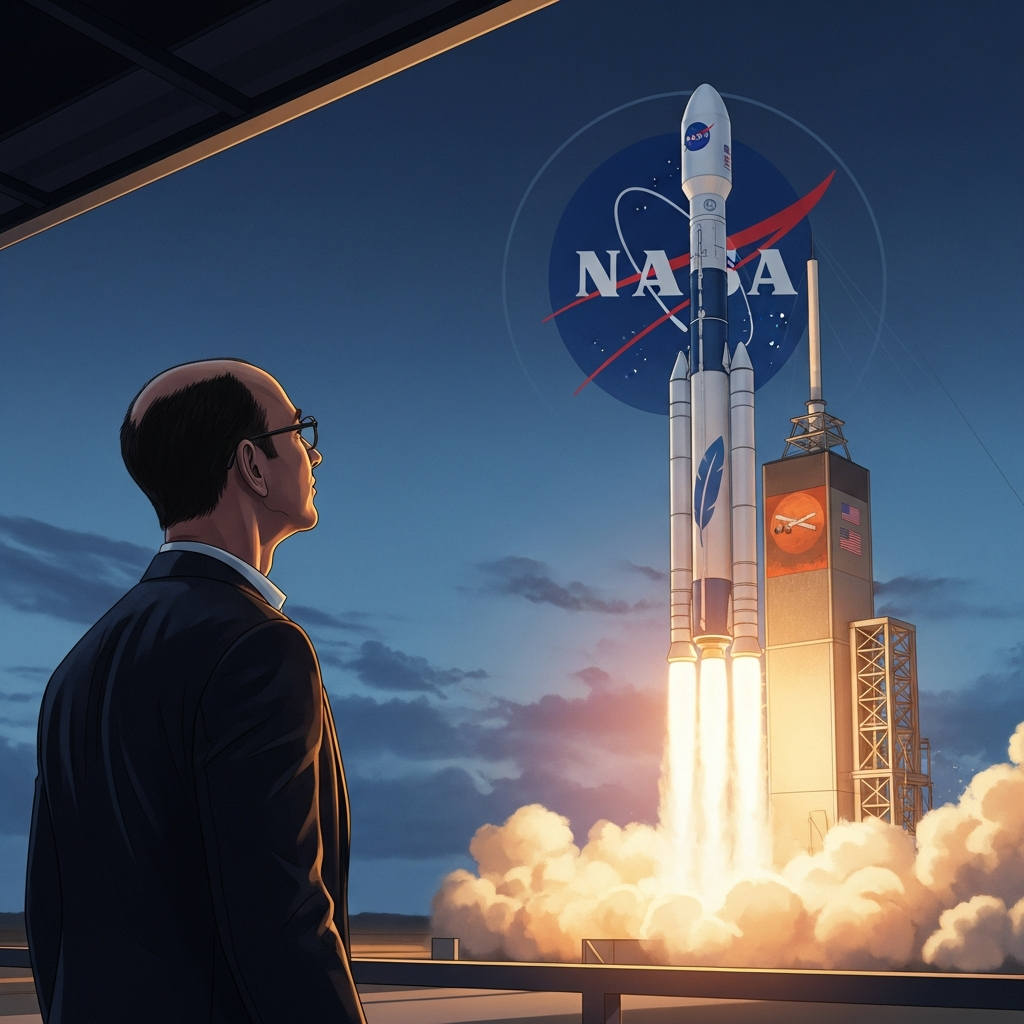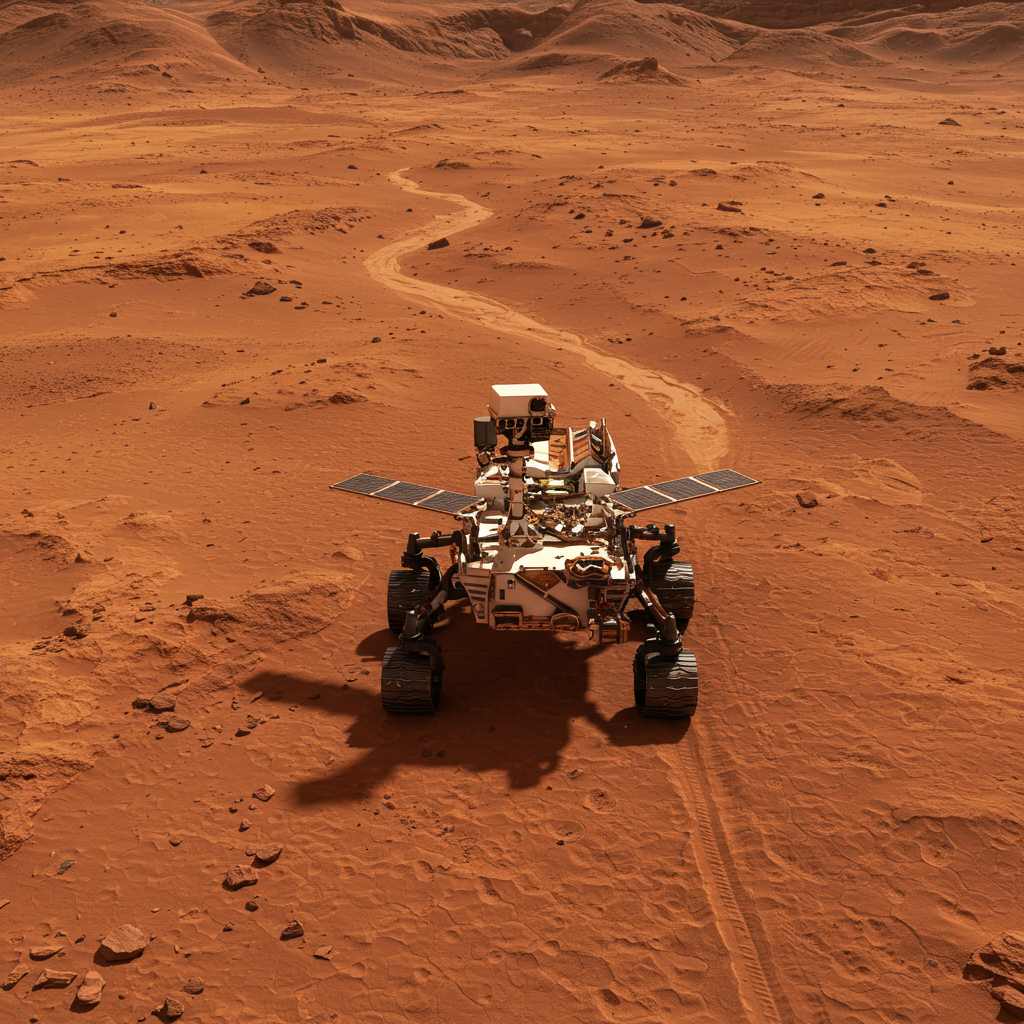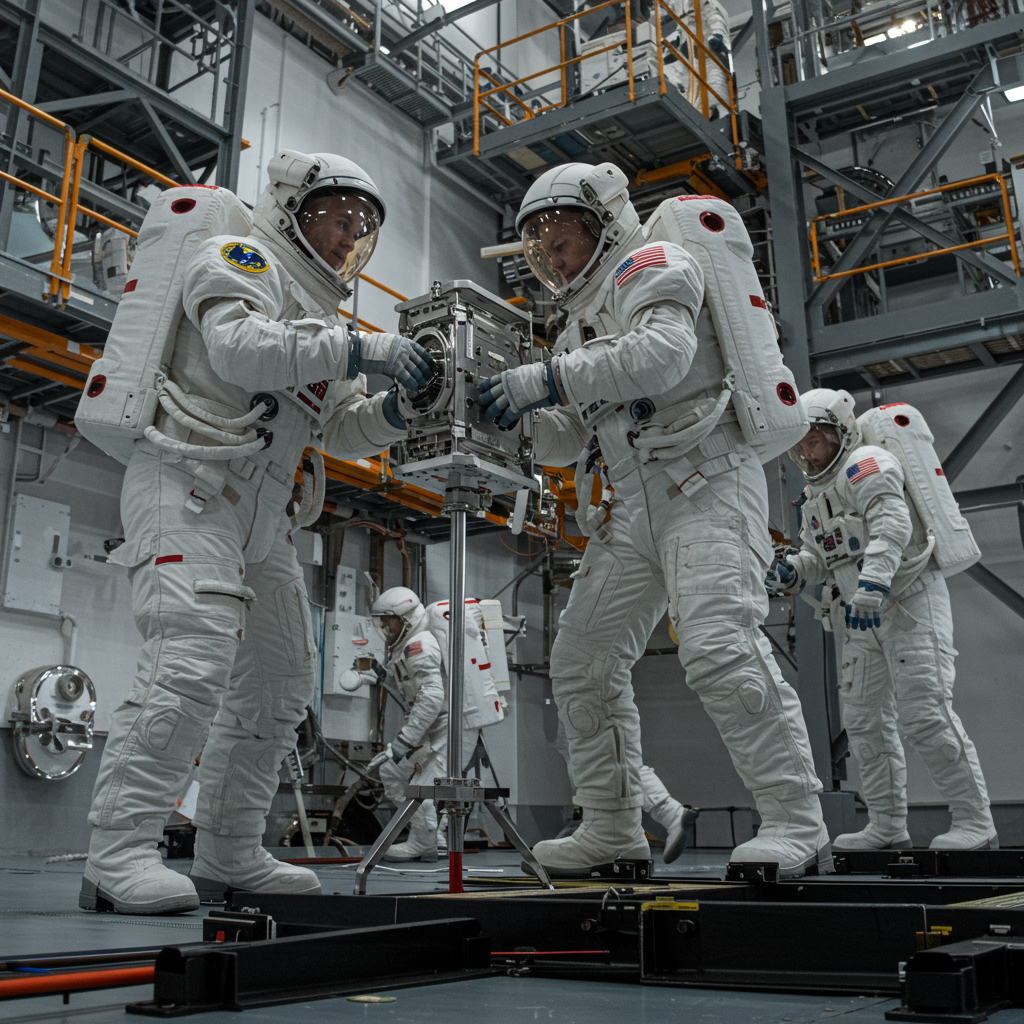Blue Origin, the pioneering space company founded by Amazon’s Jeff Bezos, has achieved a monumental milestone, successfully launching its towering New Glenn rocket on its second flight. This landmark mission, designated NG-2, not only propelled a crucial NASA science payload toward Mars but also demonstrated a critical step for the future of space travel: the successful recovery of the rocket’s first stage. This twin triumph positions Blue Origin as a serious contender in the competitive commercial space industry.
Lifting off from Launch Complex 36 at Cape Canaveral Space Force Base in Florida on Thursday, November 13, 2025, the 322-foot heavy-lift vehicle thundered into the skies just before 4 p.m. ET. The flight marked New Glenn’s first launch carrying a paying customer’s payload, making it a “full mission success,” according to Blue Origin CEO Dave Limp. This achievement follows a significant $1 billion investment by Blue Origin to rebuild the historic launch site, underscoring the company’s long-term commitment to leading space exploration.
A Breakthrough in Reusable Rocket Technology
One of the most anticipated aspects of the New Glenn launch was Blue Origin’s ambitious goal of reusability. During its maiden flight in January 2025, the company failed to recover the rocket’s first-stage booster, attributed to engines that didn’t properly reignite. After ten months of focused refinement, Blue Origin achieved a spectacular success on NG-2. Approximately ten minutes after liftoff, the 188-foot first-stage booster, affectionately nicknamed “Never Tell Me the Odds,” executed a flawless landing on the seafaring drone ship ‘Jacklyn.’ Named after Bezos’ mother, the vessel was stationed several hundred miles offshore in the Atlantic Ocean.
Why Reusability Matters for Space Travel
This successful landing is far more than just a technical feat. It represents a monumental stride in Blue Origin’s strategy to make space travel more accessible and affordable. Reusable rockets significantly drive down launch costs by eliminating the need to build a new booster for every mission. This model, famously pioneered by Elon Musk’s SpaceX with its Falcon family rockets, is crucial for competing in the rapidly expanding commercial launch market. Blue Origin envisions its New Glenn boosters completing at least 25 flights, promising a future of frequent and cost-effective access to space.
The Escapade Mission: Unlocking Mars’ Atmospheric Secrets
The primary payload for this groundbreaking mission was NASA’s twin Escape and Plasma Acceleration Dynamics Explorers (ESCAPADE) satellites. These two identical spacecraft, named “Blue” and “Gold” in homage to the University of California, Berkeley’s school colors, were built by Rocket Lab. Overseen by the University of California, Berkeley’s Space Sciences Laboratory, with Robert Lillis serving as Principal Investigator, Escapade represents a new era of cost-effective planetary science.
A Unique Path to the Red Planet
Instead of a direct route, the Escapade mission employs a highly innovative and complex trajectory. The probes were initially deployed on a path towards Lagrange Point 2 (L2), a gravitationally stable cosmic balance point located about 930,000 miles (1.5 million kilometers) beyond Earth. At L2, the satellites will “loiter” for approximately 12 months, conducting preliminary space weather studies. This “orbital backroad” strategy allows the spacecraft to conserve fuel while waiting for the optimal Earth-Mars alignment, which occurs only once every 26 months.
In November 2026, the twin satellites will depart L2, performing a brief flyby of Earth for a gravitational assist that will propel them towards Mars. They are projected to arrive in Martian orbit by September 2027. Following approximately seven months of orbital adjustments, the scientific mission will officially commence, running from June 2028 to May 2029.
Science Goals: Peering into Mars’ Past and Future
Once in orbit, the Escapade mission will embark on its core scientific investigation: a comprehensive study of Mars’ atmosphere. The two satellites will make simultaneous measurements across nearly the entire upper atmosphere and magnetosphere, from altitudes between approximately 100 and 6,200 miles (160 and 10,000 kilometers). This coordinated, multipoint observation will provide the first “stereo view” of the Red Planet’s near-space environment.
Led by the University of California, Berkeley, a team of researchers will use this data to evaluate several critical questions:
Why did Mars lose its once-dense atmosphere billions of years ago?
How do solar winds and space weather interact with Mars’ magnetic fields and ionosphere?
What are the radiation conditions around Mars, crucial for planning future human expeditions?
Escapade is part of NASA’s Small, Innovative Missions for Planetary Exploration (SIMPLEx) program, designed to leverage small, inexpensive spacecraft for high-impact science. With an estimated cost of less than $100 million, Escapade is remarkably budget-friendly compared to typical Mars orbiters, which can range from $300 million to $600 million. NASA Acting Administrator Sean Duffy hailed the mission as a “milestone” for American leadership in space exploration.
Overcoming Obstacles: From Clouds to Solar Storms
The journey to this successful launch was not without its challenges. The New Glenn mission faced multiple postponements. Initially scheduled for November 9, the launch was scrubbed due to impeding cloud cover over Florida. A second delay on November 12 was caused by an intense solar storm, which not only posed a threat to sensitive technology but also resulted in widespread Northern Lights sightings across the United States.
Adding another layer of complexity, a government shutdown had led the Federal Aviation Administration (FAA) to ban most daylight commercial rocket launches after November 10. This measure aimed to ease the strain on uncompensated air traffic controllers. Blue Origin successfully sought and obtained a crucial exception to these restrictions for its daytime launch window, demonstrating their perseverance and the mission’s importance. Due to these governmental restrictions, NASA representatives were notably absent from the pre-launch press briefing.
New Glenn’s Future: Powering the Commercial Space Landscape
The successful NG-2 mission marks a pivotal moment for Blue Origin, signaling its readiness to compete aggressively in the burgeoning commercial space sector. The New Glenn rocket, named in honor of NASA astronaut John Glenn, the first American to orbit Earth, is a powerful heavy-lift vehicle. With its capacity to haul approximately 50 tons (45 metric tons) of payload to low Earth orbit, it stands as one of the largest active rockets in the U.S., comparable in size to NASA’s Space Launch System (SLS) and second only to SpaceX’s colossal Starship.
Blue Origin envisions a diverse future for New Glenn, including:
Project Kuiper: Launching Amazon’s own constellation of internet satellites to low-Earth orbit.
Commercial Customers: Undertaking missions for various telecommunications and other private sector clients.
NASA Missions: Serving as a critical component for future government-led scientific and human exploration endeavors, including potential missions to the Moon.
With several New Glenn vehicles already in production, Blue Origin aims to “rapidly scale our flight cadence and continue delivering for our customers,” as stated by Dave Limp. This ambitious outlook positions Blue Origin to play a significant role in shaping humanity’s access to space and our understanding of the universe. While New Glenn focuses on heavy-lift orbital missions, Blue Origin also operates its smaller New Shepard rocket, which offers suborbital space tourism flights from West Texas, showcasing the company’s multi-faceted approach to space.
Frequently Asked Questions
What was the primary achievement of Blue Origin’s New Glenn rocket launch?
The New Glenn rocket’s NG-2 mission on November 13, 2025, achieved two major milestones. Primarily, it successfully launched NASA’s Escapade twin satellites toward Mars, marking its first customer payload delivery. Equally significant was the triumphant landing of the rocket’s reusable first-stage booster, “Never Tell Me the Odds,” on the drone ship ‘Jacklyn.’ This demonstration of reusability is critical for reducing launch costs and boosting Blue Origin’s competitiveness.
How will the Escapade mission reach Mars, and what are its scientific goals?
The Escapade mission will take a unique, indirect path to Mars. The twin probes were initially sent to Lagrange Point 2 (L2), a stable orbital point beyond Earth, where they will “loiter” for about 12 months. In late 2026, they will use an Earth gravity assist to propel them towards Mars, arriving in September 2027. Once in Martian orbit, their core scientific objective is to conduct simultaneous measurements of Mars’ atmosphere and magnetosphere to understand why the planet lost its dense atmosphere billions of years ago and to assess radiation conditions for future human missions.
What is the significance of the New Glenn rocket’s reusability for the commercial space industry?
The successful reusability of the New Glenn rocket’s first stage is a game-changer for Blue Origin and the commercial space industry. By recovering and reusing its boosters, Blue Origin can drastically reduce the cost of subsequent launches, making space access more affordable and frequent. This capability directly enhances Blue Origin’s ability to compete with established players like SpaceX, which relies heavily on reusable rocket technology to offer competitive launch services for both commercial and government clients.
Conclusion
The successful launch of Blue Origin’s New Glenn rocket marks a pivotal moment in the ongoing narrative of commercial space exploration. By flawlessly delivering a crucial scientific payload for NASA’s Escapade mission to Mars and achieving its first successful first-stage booster landing, Jeff Bezos’ company has proven its technical prowess and ambitious vision. This achievement not only propels our understanding of the Red Planet but also solidifies Blue Origin’s position as a major player, poised to drive down launch costs and open up new frontiers in space. The future of access to space, both for scientific discovery and commercial ventures, looks brighter than ever.




